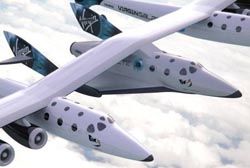
An FAA-funded study of reusable suborbital vehicles forecasts that total demand will translate into as much as $1.6 billion in revenue for operators and thousands of people flown over a decade. The study predicts commercial human spaceflight to represent the largest portion of demand. “About 8,000 high net worth individuals” around the world “are sufficiently interested and have spending patterns likely to result in the purchase of a suborbital flight,” the study said. It concluded that only about 40 percent of those would fly within the 10-year forecast period, but that was just the baseline scenario. The study details scenarios that could drive demand much higher.
The study’s baseline forecast sees demand for 335 seats in the first year, growing to 400 nine years later. But the study projected an optimistic “growth scenario” forecast, too, and the numbers there are significantly higher. In a growth scenario, the study predicts a demand form 11,000 seats over ten years. And, “If prices drop, demand will increase.” In any case, the study attributed the majority (80 percent) of reusable suborbital vehicle demand to individuals. It noted “this market is likely to be sensitive to perceptions of risk” and word-of-mouth reports about how well experiences match with expectations. The forecast concludes that as a revenue-generating industry, demand will translate into a total of anywhere from $300 to $1.6 billion over 10 years and that it will be “sufficient to support multiple providers.” Prices per seat listed by the study ranged from $95,000 flying solo with XCOR to $200,000 flying with five others aboard SpaceShipTwo. The full study is available from the FAA online, here (PDF file).


































